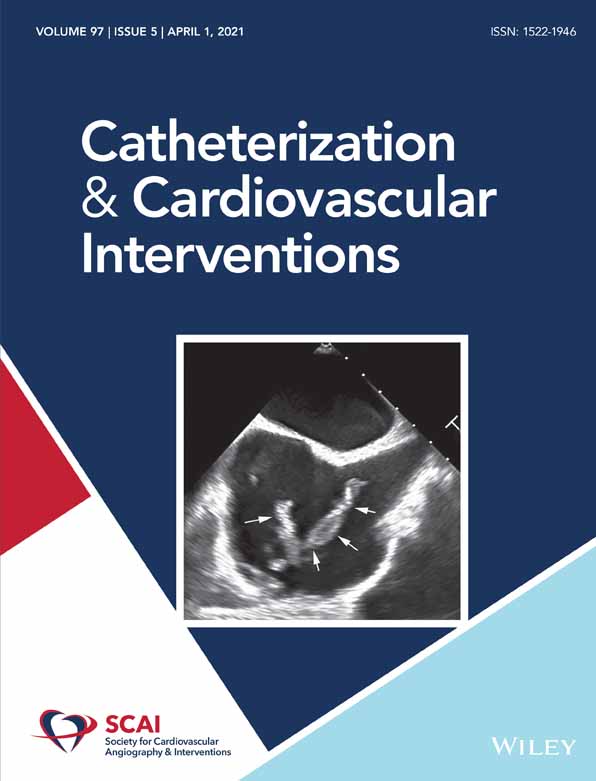Spontaneous thrombosis of a transcatheter aortic valve replacement-induced aortic root pseudoaneurysm
Abstract
Aortic annulus rupture or aortic root perforation is a rare complication of transcatheter aortic valve replacement (TAVR), requiring emergent cardiac surgery and carrying a high intraoperative mortality. Few cases can be managed conservatively, provided a strict clinical follow-up. This study describes the case of a 78-year-old patient with a degenerated bicuspid aortic valve stenosis who presented with a late aortic root perforation following TAVR, which was successfully managed applying a “watchful waiting” approach. Cardiac computed tomography imaging played a pivotal role in the diagnosis and subsequent decision on treatment and clinical follow-up.
CONFLICT OF INTEREST
The authors reported no conflict of interest.




